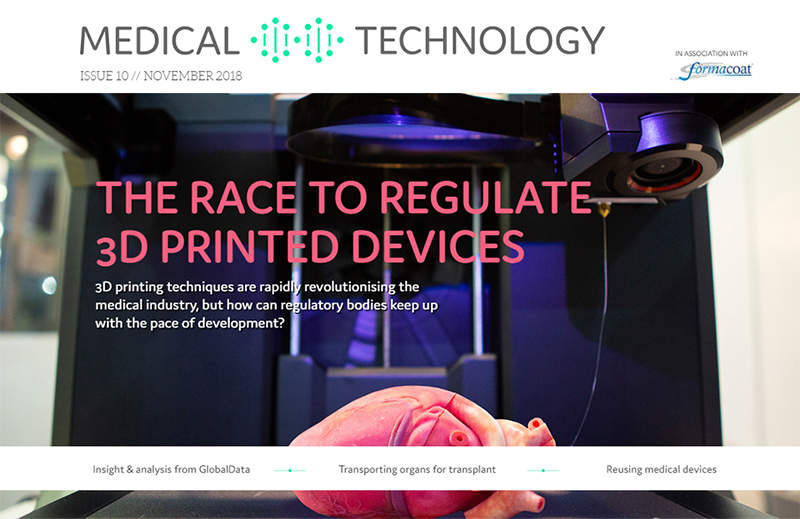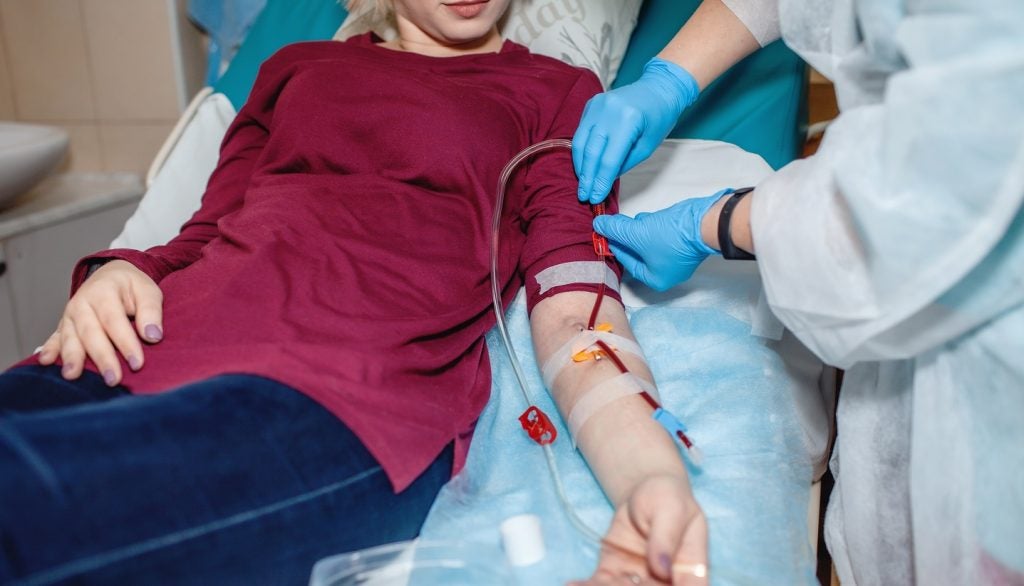
Medical Technology now available on all devices! Read it here for free in the web browser of your computer, tablet or smartphone.
Efforts are underway to improve organ transportation techniques. But, can innovation trump the cost effectiveness of the picnic cooler method when it comes to transferring human organs between donor and recipient?
Also, explore whether hospitals should be reusing more medical devices, we examine the legal aspects of using 3D printing and additive manufacturing for medical devices, and take a look at a diagnostic technology that reduces the time it takes to get full blood count results.
Plus, we find out why the process for demonstrating safety and efficacy will be a significant consideration as AI becomes increasingly commonplace and investigate why linguistic validation is a critical element of capturing international feedback.
As always, we also round up the latest news from the medical device industry, and get comment and analysis from GlobalData’s healthcare analysts on market dynamics, product innovation, regional developments and regulatory issues.
In this issue
Transporting human organs: the innovations saving lives
A helicopter landing on a rain-lashed hospital rooftop as white coats emerge running with what looks like a well-stickered beer cooler is a scene familiar to patrons of medical dramas, but is that really how life-saving organs are transported? Elliot Gardner finds out.
Read more.
How well do you really know your competitors?
Access the most comprehensive Company Profiles on the market, powered by GlobalData. Save hours of research. Gain competitive edge.

Thank you!
Your download email will arrive shortly
Not ready to buy yet? Download a free sample
We are confident about the unique quality of our Company Profiles. However, we want you to make the most beneficial decision for your business, so we offer a free sample that you can download by submitting the below form
By GlobalDataBreaking point: should we be reusing more medical devices?
A huge number of medical devices used by hospitals are labelled as ‘single-use’. As a cost-saving measure, many hospitals rely upon ‘reprocessed’ single-use devices as a cheap yet safe alternative to buying expensive new equipment, but recent manufacturer efforts to halt reprocessing could lead to hiked hospital costs. Elliot Gardner reports.
Read more.
3D printed medical devices: a tough trial for regulation?
The use of 3D printing in the medical industry is revolutionary and has huge potential. However, it also causes many issues for regulatory bodies as theoretically anyone with a 3D printer and a blueprint could print their own devices, not just registered companies. Allie Nawrat investigates.
Read more.
Cutting complete blood count tests from days to minutes
Israel-based Sight Diagnostics has created a blood test that reduces the time it takes to get full blood count results from a few days to a matter of minutes. Charlotte Edwards speaks to co-founder and CEO Danny Levner to find out the significance of the device and the company’s future plans.
Read more.
“At least I have my health”: the reputational impact of AI in healthcare
As AI becomes increasingly commonplace in the medical device sector, the process for how safety and efficacy are demonstrated will be a significant consideration for clinicians seeking to implement the devices, regulatory agencies and device manufacturers. Marcus Smith, managing director EMEA at Polecat, explains.
Read more.
Amplifying the patient voice and the role of linguistic validation
Virtually everyone and anyone in life sciences, from regulators to patient advocacy groups, agree that patients should have greater input in the drug and medical device lifecycle and should also have the opportunity to do so much earlier than they have done to date. It’s vital for both pharma and CROs to capture international feedback consistently so that they can rely on it to shape their planning. AMPLEXOR’s Dana Weiss explains why linguistic validation is a critical element of this process.
Read more.
Human + machine: The future of digital healthcare
At the recent Medidata NEXT conference Ronan Wisdom, global lead at Accenture’s Connected Health practice, discussed new forms of human-machine collaboration and their potential impact on healthcare and clinical development. Susanne Hauner reports.
Read more.
Next issue preview
Spanish health tech firm Avinent has purchased a 3D printer capable of producing multi-colour, multi-texture, multi-material models in a single print, which could push forward the practice of using patient-specific anatomical prints to simulate and plan surgeries or explain conditions to patients. We find out if this technology may be the future of surgical simulation and patient engagement.
Also, we profile a 1mm-long drug delivery robot developed by researchers at City University Hong, designed to carry a therapeutic payload more than 100 times its own weight, explore the dangers of holding back on strong AI regulation in healthcare, and take a look at the potential of Google’s AI software, which is claimed to be able to detect late-stage breast cancer cells faster, and with more accuracy than pathologists.
Plus, we investigate the role of cybersecurity in the growing medical device market and examine whether a research team from the University of Chicago can revolutionise prosthetics with brain-powered prosthetic limbs that that receive sensory feedback.





Related Company Profiles
Google LLC
Accenture Plc
ConnectedHealth LLC
Polecat